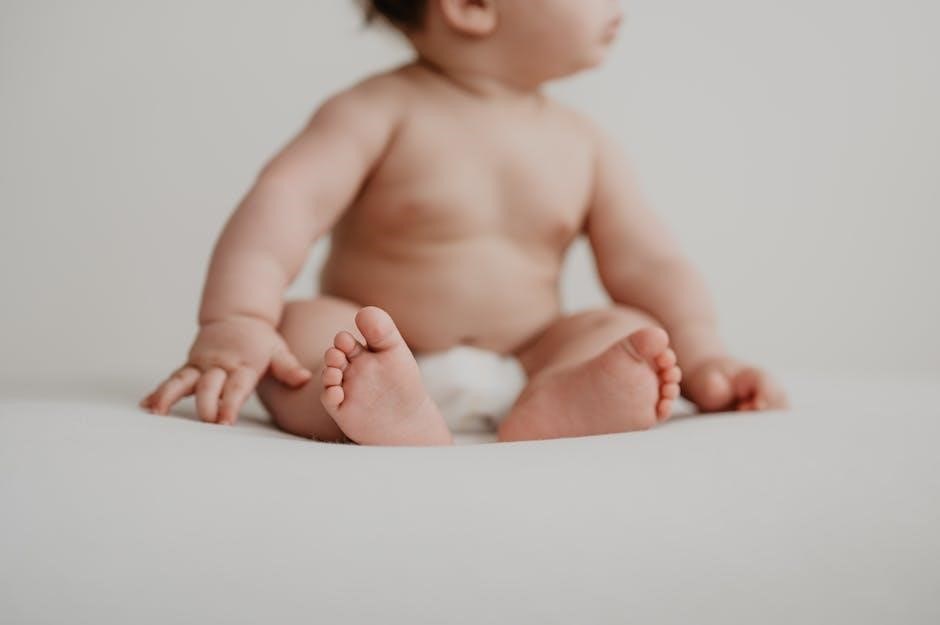Diaper stockpiling is a smart strategy for new parents to save money and time. It involves buying diapers in bulk to ensure a steady supply, reducing last-minute purchases and stress. Starting with sizes 1, 2, and 3 is often recommended.
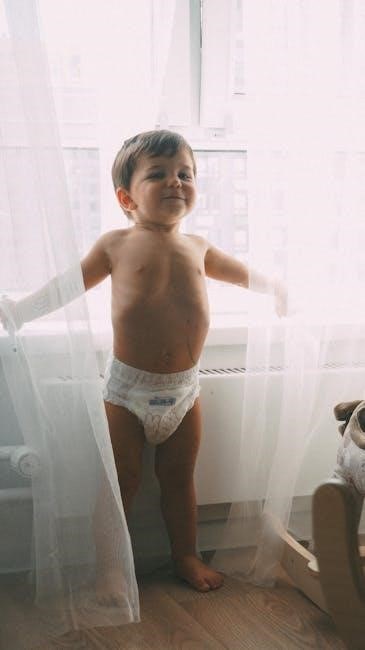
Why Build a Diaper Stockpile?
Building a diaper stockpile is a practical and cost-effective strategy for new parents. It helps save money by purchasing diapers in bulk at discounted prices, avoiding last-minute, more expensive buys. Stockpiling also reduces stress, ensuring a steady supply during emergencies or when stores are out of stock. Additionally, it allows parents to prepare for future needs, as babies grow quickly and require larger sizes. Many parents start stockpiling during pregnancy, taking advantage of sales and coupons. Having a stockpile also provides peace of mind, knowing you’re ready for the first year and beyond. It’s a smart way to budget and plan ahead, ensuring you’re never caught without essentials for your baby.
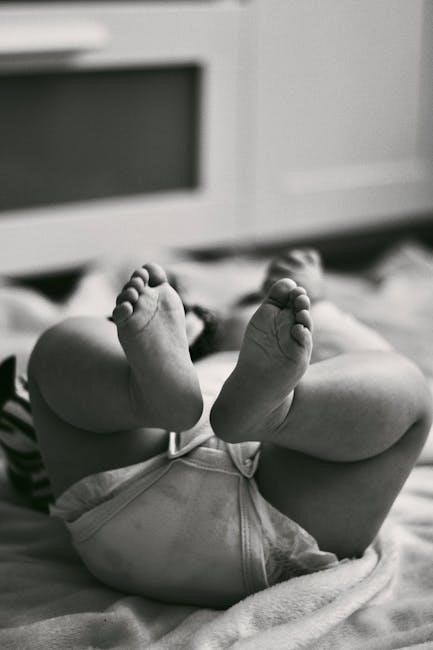
Determining the Right Diaper Sizes for Your Stockpile
Start with smaller sizes like 1 and 2, as babies grow quickly. Stockpile larger sizes like 3 and 4 for later use, adjusting as your baby grows.
Understanding Diaper Sizes
Diaper sizes vary based on a baby’s weight, ensuring a proper fit. Premie sizes are for babies under 6 pounds, while Newborn (up to 10 pounds) and Size 1 (8-14 pounds) are for the earliest stages. Sizes 2 (12-18 pounds) and 3 (16-28 pounds) are most commonly used, with Size 4 (22-37 pounds) and Size 5 (27-35 pounds) for older toddlers. Size 6 accommodates larger children up to 45 pounds. Pull-Ups are for potty training. Knowing these sizes helps avoid waste and ensures your stockpile remains practical as your baby grows.
How Many Diapers to Stockpile
A baby uses about 8-12 diapers daily, totaling around 300 diapers per month. Stockpiling 1,500-2,000 diapers in sizes 1, 2, and 3 is recommended for the first year. Size 2 and 3 are most needed, so stock up on these. Aim for 500-700 size 1 diapers and 1,000-1,500 size 2 and 3. Sizes 4 and 5 are less urgent but useful later. Avoid overstocking larger sizes early on. Consider storage space and diaper shelf life to prevent waste. Adjust quantities based on your baby’s growth rate and personal preferences. This guide ensures you’re prepared without overspending.
When to Start Stockpiling Diapers
Starting to stockpile diapers as early as possible, ideally during the second trimester, allows you to spread out costs and take advantage of sales. Begin with sizes 1, 2, and 3, as these are most frequently used. Consider using Amazon gift cards or setting aside a monthly budget for diapers. Ensure you have dedicated storage space, such as under the crib or in a closet, to keep diapers organized without cluttering your home. Be mindful of diaper shelf life and your baby’s growth rate to avoid overstocking. Track sales and use coupons to maximize savings. Finally, test different brands before stockpiling to ensure a good fit for your baby. This balanced approach ensures preparedness and financial prudence.
Where to Buy Diapers for Stockpiling
When it comes to stockpiling diapers, there are several convenient and cost-effective options to explore. Online retailers like Amazon offer bulk purchasing, subscription services, and fast delivery, making them a popular choice. Warehouse clubs such as Costco and Sam’s Club provide discounted rates for large quantities, perfect for stockpiling. Big-box stores like Walmart and Target often have competitive pricing, sales, and bulk options. Additionally, grocery stores may carry diapers, though selection and bulk purchasing options may be limited. For added convenience, consider using coupons, cashback apps, or store loyalty programs to maximize savings. Some parents also opt for specialized baby stores or online marketplaces for specific brands. Regardless of where you shop, comparing prices and taking advantage of deals can help you build your stockpile efficiently.
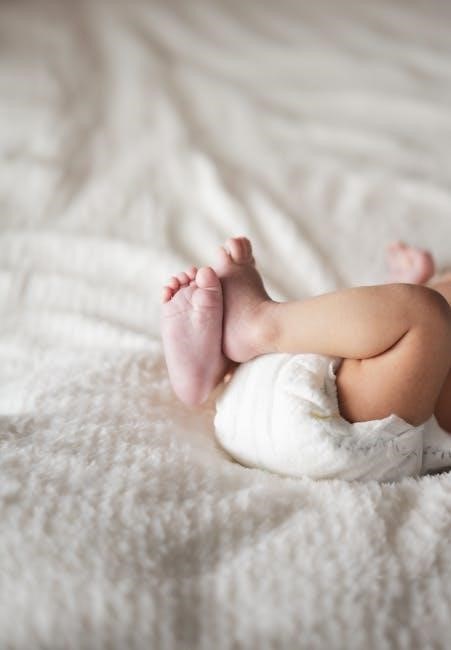
How to Store Your Diaper Stockpile
Store your diaper stockpile in a cool, dry place to maintain quality. Use airtight containers or plastic bins to protect from moisture and pests. Consider using shelving units for organization and easy access.
Space-Saving Storage Tips
Maximize your space by using stackable plastic bins or containers labeled by diaper size. Install shelves or cabinets in a closet or attic for efficient storage. Consider under-bed storage bins for easy access. Utilize vertical space with wall-mounted shelves or hanging organizers. Rotate your stockpile regularly to ensure older diapers are used first. Keep the area dry and cool to maintain diaper quality. Store only what fits neatly to avoid clutter. Use dividers or baskets to separate sizes and keep everything organized. This approach ensures your diaper stockpile remains tidy, accessible, and space-efficient while keeping your home organized.
Do Diapers Expire? Shelf Life Considerations
Diapers do not have expiration dates, but their effectiveness can decrease over time. Most diapers have a shelf life of 5-10 years when stored properly. Environmental factors like humidity, temperature, and exposure to light can affect their quality. Check for signs of degradation, such as brittle materials or a loss of absorbency, before using older diapers. Manufacturer guidelines suggest using diapers within 5 years for optimal performance. If stored in a cool, dry place, diapers can remain usable for several years. However, it’s important to inspect them for any damage or wear before use. Always prioritize freshness and quality when stockpiling to ensure reliability for your baby.
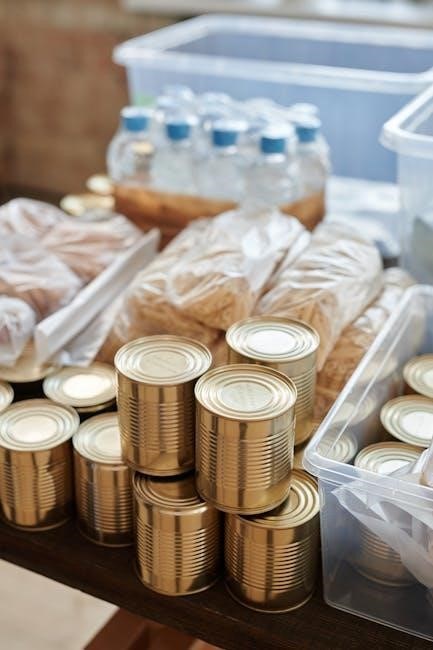
Budgeting for Your Diaper Stockpile
Budgeting for a diaper stockpile is essential to avoid financial strain. Diapers can cost upwards of $1,000 annually, making stockpiling a cost-effective strategy. Start by determining your budget and how many diapers you need. Buying in bulk during sales or using coupons can save money. Consider the average cost per diaper and aim to stockpile sizes 1, 2, and 3, as these are used the most. Allocate a specific amount each month to gradually build your stockpile. Additionally, compare prices across stores and online retailers to find the best deals. Using cashback apps or signing up for rewards programs can also help stretch your budget. Prioritize quality and quantity while staying within your financial limits to ensure a sustainable stockpile. This approach will help you save money and reduce the stress of last-minute purchases.
Diaper Stockpile Chart: A Visual Guide
A diaper stockpile chart is a valuable tool for planning and organizing your diaper supply. It helps you visualize how many diapers you need for each size and stage, ensuring you never run out. The chart typically outlines the number of diapers required per size, from newborn to pull-ups, based on average usage. By referencing the chart, you can avoid overstocking or understocking specific sizes. It also helps you budget more effectively by showing where to allocate your resources. Many charts include columns for size, quantity, and estimated duration of use, making it easier to track your stockpile. You can find pre-made charts online or create your own using spreadsheets. A well-designed chart ensures your diaper stockpile meets your baby’s needs at every stage, providing peace of mind for new parents.
Common Concerns and Practical Tips
When building a diaper stockpile, concerns about space, budget, and expiration often arise. To save space, store diapers in under-bed containers or shelves. For budgeting, consider buying in bulk during sales or using gift cards. Check expiration dates, as diapers typically have a shelf life of 5 years. Rotate stock to use older diapers first. If unsure about sizes, start with smaller quantities and adjust as needed. Donate unused diapers if they’re still in good condition. Keep track of inventory to avoid overstocking. Finally, involve family and friends by asking for diapers as gifts. These tips help maintain a practical and efficient diaper stockpile, ensuring you’re prepared without unnecessary stress or waste. Balancing these factors ensures your stockpile remains useful and cost-effective for your baby’s needs.
